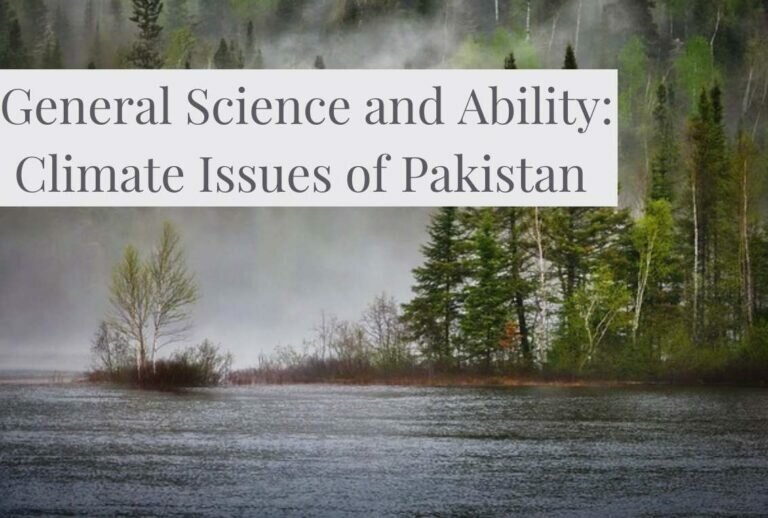The Debate Over Renewable Energy: Is it the Solution to Climate Change?
I. Introduction
Climate change is a global issue that poses a significant threat to the planet and its inhabitants. Rising temperatures, sea level rise, and more frequent extreme weather events are just a few of the consequences of human-induced climate change. To mitigate these impacts, it is crucial to significantly reduce the emissions of greenhouse gases. The reduction of carbon dioxide is more important in the atmosphere. The purpose of this article is to examine the potential of renewable energy as a solution to climate change.
The article will provide an overview of renewable energy, its benefits, and its limitations. It will also discuss the role it plays in reducing greenhouse gas emissions. Moreover, it will also examine the current state of renewable energy use and development, and the policies and initiatives aimed at promoting renewable energy.
II. Overview of Renewable Energy
Renewable energy is energy that is generated from natural resources such as the sun, wind, water, geothermal heat, and biomass, which are replenished naturally. These sources of energy are considered renewable because they are not depleted when used and are therefore considered sustainable. Examples of renewable energy sources include solar, wind, hydropower, geothermal, and bioenergy.
Renewable energy is becoming an increasingly important source of energy worldwide. According to the International Energy Agency, in 2020, renewable energy, including hydro and bioenergy, accounted for 26% of the world’s electricity generation. Solar, wind, and hydropower are the leading sources of renewable electricity. The use of renewable energy is expected to continue to grow in the coming years. It is because technological advancements and declining costs make it more accessible and competitive with fossil fuels.
Also Read: Why Democracy is Not Always the Best Form of Government?

III. Prospects of Renewable Energy
Discussion of the Environmental Benefits of Renewable Energy:
Renewable energy sources emit little to no greenhouse gases, unlike fossil fuels. Fossil fuels are the primary source of carbon dioxide emissions. By using renewable energy, we can reduce our carbon footprint and mitigate the impacts of climate change. Additionally, renewable energy sources such as solar and wind do not produce air or water pollution. These kinds of pollution can have detrimental effects on human health and the environment.
Analysis of the Economic Benefits of Renewable Energy:
Renewable energy can also have positive economic impacts. As renewable energy sources become more prevalent, the cost of technology associated with them has been declining. It is making them more cost-competitive with fossil fuels. Investing in renewable energy can also create jobs in some departments. These include manufacturing, installation, and maintenance of renewable energy systems. Additionally, reducing dependence on fossil fuels can decrease a country’s vulnerability to oil price fluctuations.
Examples of Successful Renewable Energy Projects and Initiatives:
Renewable energy projects and initiatives can be seen all over the world. For example, countries like Germany and China have implemented large-scale renewable energy projects. They have had significant impacts on their energy mix. In Germany, the share of renewable energy in the electricity mix has been consistently increasing. It has reached over 40% in 2020. China has also been investing heavily in renewable energy. It has a goal to reach 20% of non-fossil energy by 2030.
Furthermore, many businesses, cities, and households are also investing in renewable energy, installing solar panels and wind turbines on their property.
Also Read: A Dilemma of Disaster Management in Pakistan
IV. Cons of Renewable Energy
Discussion of the limitations and challenges of renewable energy:
Although renewable energy is a promising solution to climate change, it also has its limitations. One limitation is that renewable energy sources, such as solar and wind, are dependent on weather conditions. This can make them less reliable than fossil fuels. This can make it difficult to ensure a consistent and stable energy supply, especially in areas with low sun or wind resources.
Analysis of the costs and technical challenges associated with renewable energy:
The initial costs of renewable energy systems can be high. This can be a barrier to widespread adoption, particularly for lower-income households and communities. Additionally, the installation of renewable energy systems can also be technically challenging, particularly in remote areas.
Examples of challenges and criticisms of renewable energy:
Some of the criticisms of renewable energy include the fact that some renewable energy sources such as hydropower, can have negative environmental impacts. For example, large hydroelectric dams can alter the flow of rivers and displace local communities. Additionally, the use of biofuels as a source of renewable energy can also be controversial. It is because it can lead to competition for land use between food and energy production.
Intermittency:
Renewable energy sources are not always available, such as when the sun doesn’t shine or the wind doesn’t blow. This intermittency can make it difficult to ensure a consistent and stable energy supply, which can be a challenge for the grid and for energy providers. This challenge can be addressed through energy storage solutions and by connecting to a larger grid, with access to diverse energy sources.
Also Read: Education Problems in Pakistan Essay
V. The Role of Renewable Energy in Tackling Climate Change
Analysis of the potential of renewable energy to reduce greenhouse gas emissions:
Renewable energy has the potential to significantly reduce greenhouse gas emissions, particularly carbon dioxide. CO2 is the primary driver of climate change. Renewable energy sources such as solar and wind do not emit any greenhouse gases during operation, unlike fossil fuels. By increasing the use of renewable energy, we can decrease our dependence on fossil fuels and reduce our carbon footprint.
The need for a comprehensive and integrated approach to tackling climate change:
While renewable energy is a crucial component of addressing climate change, it alone is not sufficient. A comprehensive and integrated approach is needed that also addresses energy efficiency, transportation, and land use. By implementing policies and initiatives that address all of these areas, we can make meaningful progress in reducing greenhouse gas emissions. Moreover, it will help in mitigating the impacts of climate change.
Examples of policies and initiatives aimed at promoting renewable energy:
There are a variety of policies and initiatives aimed at promoting renewable energy at the national, regional, and local levels. One example is the implementation of renewable portfolio standards. These standards require a certain percentage of a country’s or region’s energy to come from renewable sources. Another example is the use of feed-in tariffs, which provide financial incentives for the production of renewable energy. Additionally, many governments offer tax credits, grants, and other financial incentives to encourage the development and use of renewable energy.
Also Read: The Impact of Artificial Intelligence on the Global Job Market
VI. Conclusion
Renewable energy is a promising solution to climate change. It is because it can significantly reduce greenhouse gas emissions, and is a sustainable source of energy. The use of renewable energy has been increasing, driven by technological advancements and declining costs. However, renewable energy also has its limitations and challenges, such as intermittency, high initial costs, and technical challenges. A comprehensive and integrated approach is needed to tackle climate change, including policies and initiatives aimed at promoting renewable energy.
Implications of the discussion for policy and practice:
The discussion highlights the need for policies and initiatives that promote the use of renewable energy and address the limitations and challenges associated with it. This can include measures such as renewable portfolio standards, feed-in tariffs, and financial incentives for the development and use of renewable energy. Additionally, investments in research and development can lead to further advancements in renewable energy technology and make it more accessible and cost-competitive.
Final thoughts on the subject:
Renewable energy is a vital component of addressing climate change and ensuring a sustainable future. As the world faces an increasingly urgent need to reduce greenhouse gas emissions, the development and use of renewable energy will be crucial. However, it is important to remember that renewable energy alone is not the complete solution and that a comprehensive and integrated approach is needed.







